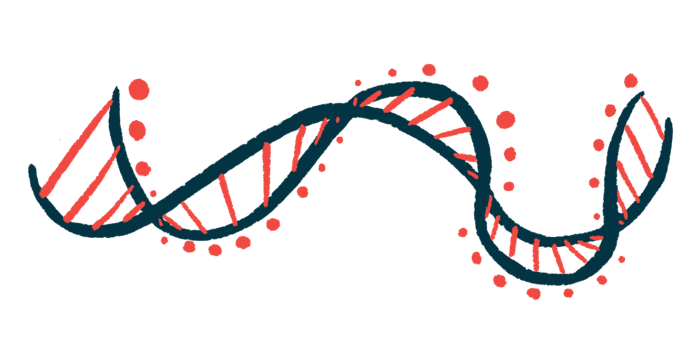Gene activity profile of blood cells may help ID Cushing’s syndrome
Blood transcriptome profiles may also be useful in assessing disease severity
Written by |

Analyzing the gene activity profile of blood cells may help detect Cushing’s syndrome and could be useful in assessing its severity, a recent study reports.
The study, “Whole blood transcriptomic signature of Cushing’s syndrome,” was published in the European Journal of Endocrinology.
Cushing’s syndrome is an umbrella term for disorders characterized by excessively high levels of the stress hormone cortisol. Cushing’s disease is a specific form of the syndrome where excess cortisol levels are caused by a tumor in the brain’s pituitary gland.
Elevated cortisol levels have effects on cells throughout the body, including those in the blood.
Scientists analyzed transcriptome, or specific set of genes ‘turned on’ inside cells
In this study, scientists analyzed how the transcriptome, that is, the specific set of genes that are “turned on” inside a cell, is affected in blood cells of people with Cushing’s syndrome.
For their analysis, the researchers collected 57 blood samples from 43 people with a confirmed diagnosis of endogenous Cushing’s syndrome — forms of the syndrome in which high cortisol levels are brought on by problems within the body itself, most often tumors.
Some patients had blood samples taken both before and after undergoing treatment. At the time of blood sampling, patients were classified into several groups, depending on their cortisol levels.
A total of 28 blood samples were taken from people with overt Cushing’s syndrome, meaning those that displayed clinical and laboratory signs of hypercortisolism (high cortisol levels), most of whom specifically had Cushing’s disease. Another 11 samples were collected from people with mild Cushing’s, meaning those in whom cortisol levels were above normal, but not high enough to be considered overt Cushing’s syndrome or cause obvious clinical symptoms.
There were also 10 samples from patients who had normal cortisol levels after undergoing surgery or receiving pharmacological treatment, and eight samples from patients with abnormally low cortisol levels resulting from adrenal insufficiency occurring after pituitary surgery for Cushing’s disease. Of note, adrenal insufficiency is a condition in which the adrenal glands are unable to produce enough levels of certain hormones, including cortisol.
Marked differences between samples from patients with different cortisol levels
Transcriptome analyses showed marked differences between samples from patients with different cortisol levels. Patients with overt Cushing’s syndrome generally had greater activity in genes associated with immune responses, as well as in genes related to cortisol signaling, including one called FKBP5. Analyses also showed that differences in transcriptome profiles were significantly correlated with cortisol levels.
The researchers noted that, as expected, transcriptome profiles from patients with mild Cushing’s “fall in-between [those of] patients with overt Cushing’s syndrome and [normal cortisol levels], with some overlap in both groups.”
After examining the samples’ transcriptomic profile, the researchers randomly selected 29 samples to train a computer algorithm to identify Cushing’s syndrome based on the blood transcriptome signature of 1,500 genes, and another 17 samples to test the trained computer algorithm. A separate group of 30 samples were also used for validation.
Differences in transcriptome could be used to accurately identify patients
Results showed differences in the transcriptome could be used to identify Cushing’s patients with an accuracy higher than 80% in both validation groups.
The FKBP5 gene by itself had an accuracy of 76% in the initial validation group of 17 samples. However, in the second validation group, the accuracy of using a single gene to identify Cushing’s patients was notably lower, at 46%. According to the researchers, this finding emphasizes the importance of validating potential biomarkers in broad groups of patients.
Overall, these findings indicate differences in blood transcriptome profiles may be useful for detecting and assessing the severity of Cushing’s disease, though the researchers stressed further investigation in broader populations will be needed to verify the results and determine how to apply them in clinical practice.








